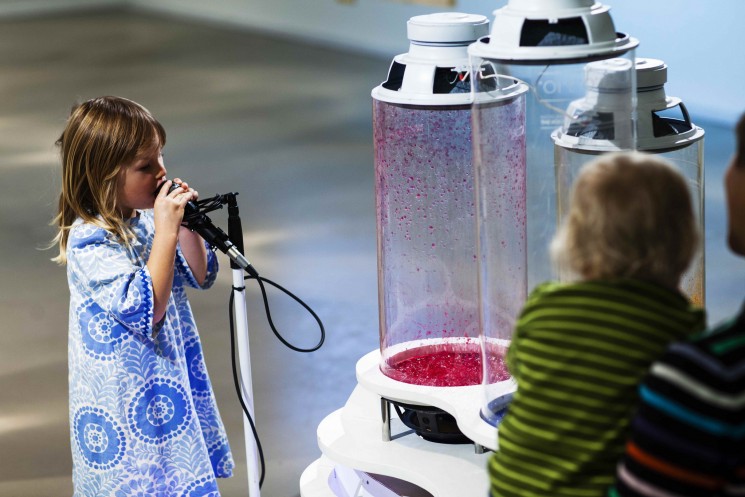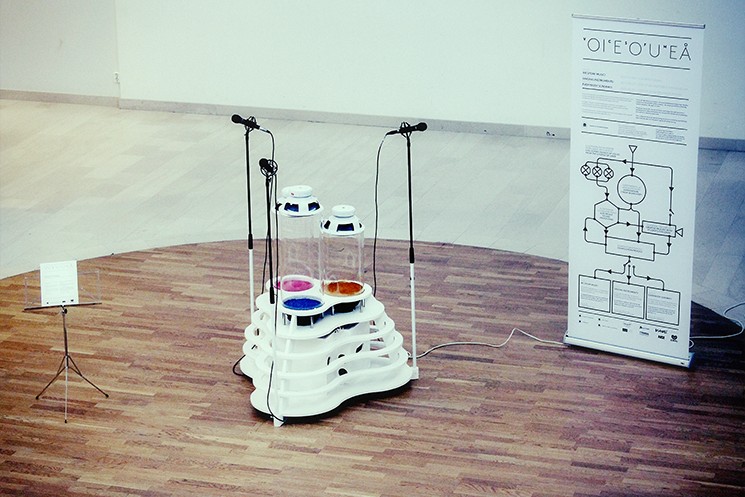The Voice Harvester
The Voice Harvester is designed to elicit curiosity, involvement, and long periods of engaged interaction, leaving the user unaware of time and the social conventions about how to behave in public spaces
Music composer Anders Lind came to us with a simple brief: to create a device that would allow him to collect a range of different kind of human voices in a fun, playful, and tangible way, for him to be able to use later on in a composition entirely based on human voices.
The resulting artifact, the Voice Harvester, is an exploratory interactive installation that in real-time attempts to embody its users' human voices in physical materials and mechanical transformations.
When users speak or makes any other sound into one of the Voice Harvester's three microphones, they will see the physical materials in the acrylic tubes animate with the physical embodiment of their voice. The intent was that once this happens users will continue to engage and interact with the Voice Harvester to see the different ways in which they are able to manipulate the materials into action. The sound input is amplified and transmitted through audio drivers connected to a thin, flexible membrane that agitates the material on top of it. The project's title, “The Voice Harvester”, has been derived from the fact that the installation is able to elicit nonlinguistic, expressive, and naturalistic sounds to explore the full range of the capability of the human voice through use of novel, playful, and embodied interaction.
This design exploration took place by a team at Interactive Institute Swedish ICT under the guidance of artist and composer Anders Lind. The concepts of human engagement, involvement, and embodiment as well as the creation of a physical tangible thing were central to this design exploration.
From an interaction design and user experience perspective, we find it interesting how this interactive object is able to elicit curiosity, involvement, motivation, and long periods of engaged interaction, leaving the user seemingly unaware of time and quickly able to overcome social conventions of how to behave in public spaces.
About this Project
The Voice Harvester is built as part of a series of interactive installations to be shown in Umeå, Sweden as part of the Umeå 2014 Capital of Culture.
It has been exhibited at the MADE festival 2013 and at the Felleshaus, Berlin, in 2014.
This project was carried out at Interactive Institute Swedish ICT in collaboration with music composer Anders Lind.
Design Team
- Daniel Fallman
- Nigel Papworth
- Fredrik Nilbrink
- Kent Lindberg
- Ambra Trotto
- Björn Yttergren
- Ru Zarin
- Jeroen Peeters
- Nic True
- Anders Lind



